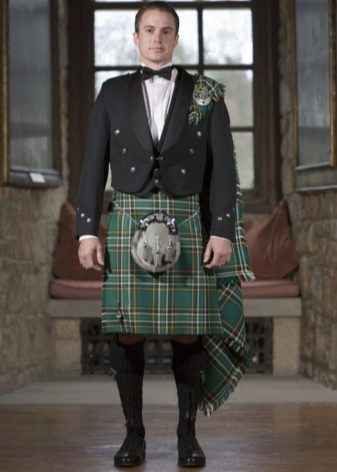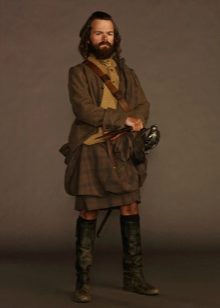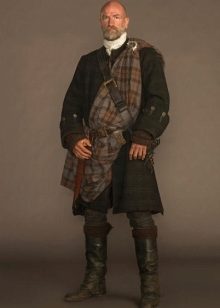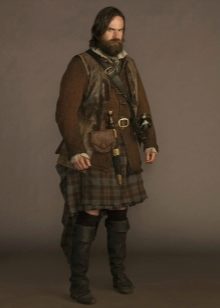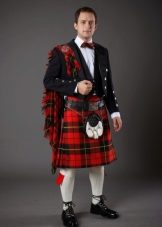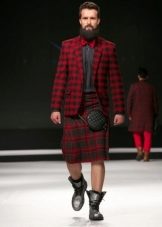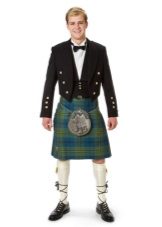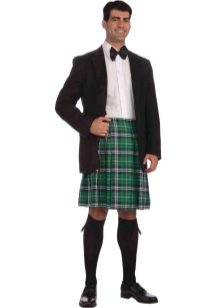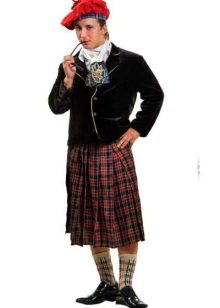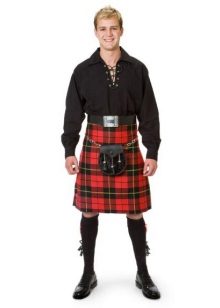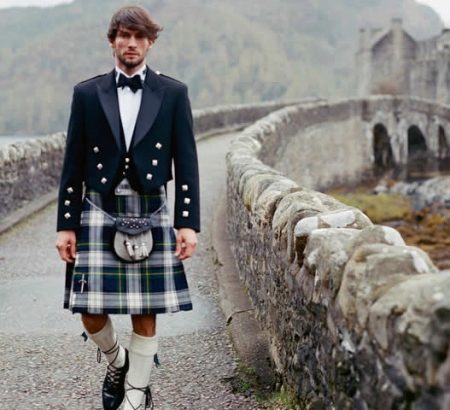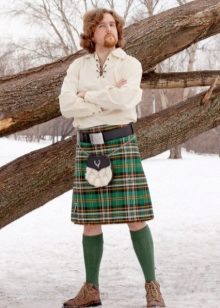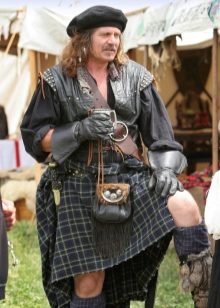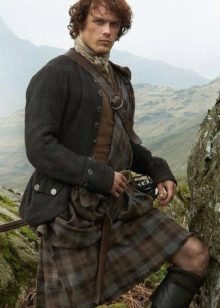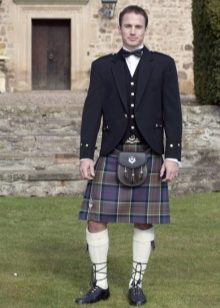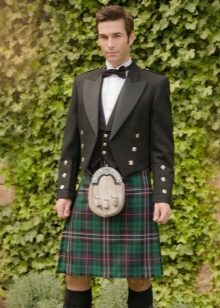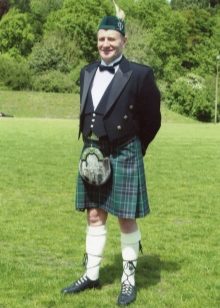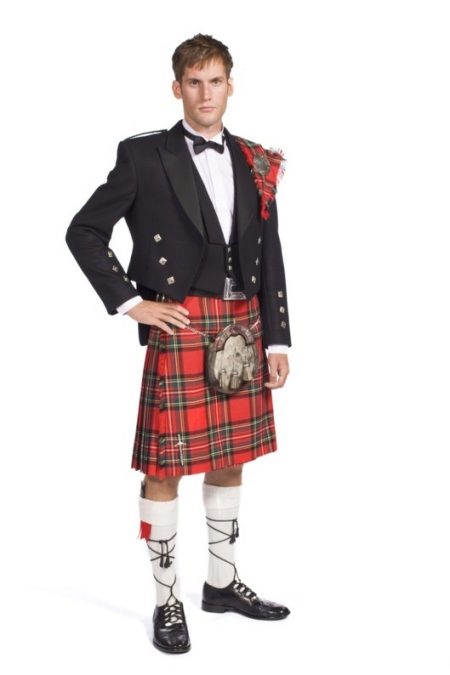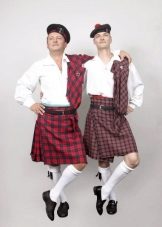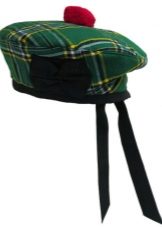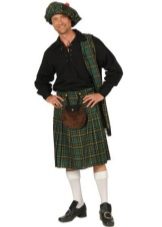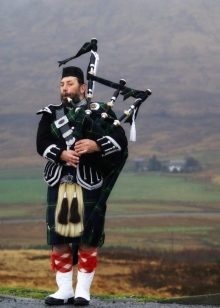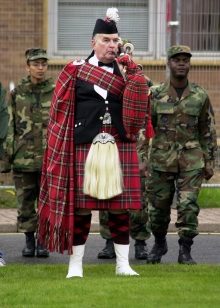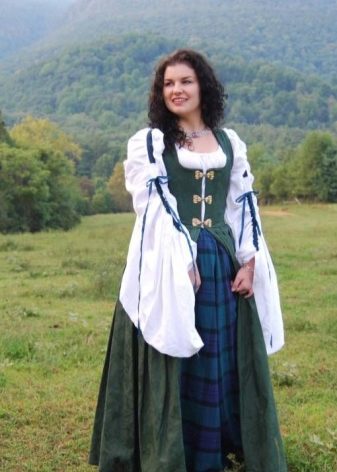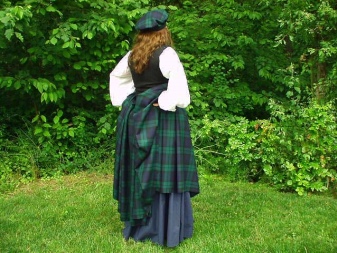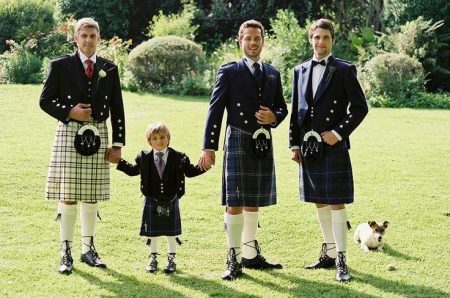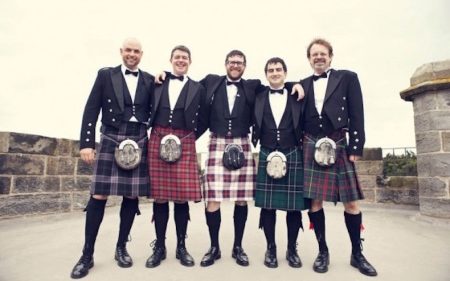Scottish national costume
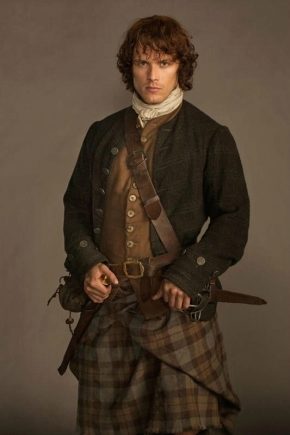
Probably in the world there is no man who has not heard about the Scottish national costume. You may not be able to imagine what the costumes of Bashkiria or Korea look like, but everybody heard about the unusual Scottish skirt called kilt.
A bit of history
At first, the kilts were not all Scots clothes, but only highlanders. A voluminous, large piece of cloth wrapped around the hips and fixed with a belt (namely, the first medieval kilts looked like this) was extremely convenient for the rainy climate and the mountainous terrain of Scotland. It did not hold down the movement, kept it warm perfectly, it was easy enough to dry it, and in the evenings it could be used as a rug. In battle, the big kilt could easily have been thrown off, ensuring the maximum freedom of movement, and fighting in one shirt.
Over time, the size of the kilt changed, replaced by a large and cumbersome came a small kilt, which is more comfortable to wear and is used to this day in the modern world.
Features
A distinctive feature of any Scottish costume is the checkered fabric from which it is made. This wool material, the so-called tartan, is an interlacing of strips of various colors, sizes and inclinations. Moreover, since the clan structure is still preserved in Scotland, the figure defines the clan membership, i.e. each genus manually created its own tartan, it can be used to determine which region a person belongs to. You can not use someone else's coloring, because it will be considered a violation, which in Scotland is strictly monitored by those responsible.
Colors and shades
Based on the number of colors of tartan it was easy to determine the social status of a person: for example, one or two colors means a servant or a farmer, and if six or seven, then this is already a military leader or leader. Now, more than 6,000 original tartans can be counted, since besides the generic, clan colors, they began to make many tartans dedicated to various special occasions - wedding, anniversary, mourning, etc.
Fabric and cut
Traditionally, the fabric is made and painted by hand. Used sheep wool and dyes of plant origin. The cut and silhouette of the classic kilt has remained unchanged for many centuries.
Accessories and shoes
It is hard to imagine a classic Scottish costume and without a whole range of different accessories that emphasize ancient traditions. For example, the sporran is a comfortable leather purse bag that is worn strictly near the belt buckle. Or hosy - woolen socks above the knees, protecting the legs of the Scots from the bitter cold. They still have to hide the national dagger - skin do, although in our time it is more a decorative element.
Functional thing can be called kiltpin - a pin in the form of a sword, which is attached to the edge of the kilt to weighting the edge. It also serves as an excellent costume decoration, because it can be made of precious metals with stones.
It is customary to wear brogues on Scots' feet — special shoes made of thick perforated leather with long laces.
Well, an interesting headdress completes the image - a bormour or a similar tam-o-shtenter. Both variants are a woolen beret with a pompon, only the bormour differs exclusively in the red pompon and two silk ribbons in the back.
No less popular is the cap-cap called Glengarry - an improved model of the bormoral.
Varieties
Women's Scottish costume is quite traditional and not as creative as men's, therefore less known. It consisted of a rather simple bottom dress and a more elegant top dress, decorated with patterns of braid. The image was completed with an embroidered wool apron with a belt and a headdress for married women.
The dress version of the female Scottish costume looks more elegant. The combination of a snow-white blouse with wide sleeves, voluminous skirt made of tartan and a corset with bright lacing adds to the image of emphasized femininity and grandeur.
As for children's national costumes, children in Scotland are taught from early childhood to strictly follow the ancient traditions, because their outfits are no different from adult models.
Modern models
In the modern world, the kilt has long ceased to be part of only Scottish culture. Today, given the increasing fashion for versatility, the checkered skirt is becoming more popular than ever. Numerous variations of kilts are created, modern models are made not only from traditionally woolen fabric, but also from raincoats and even leather. Every year various official events are devoted to the kilts, in them you can see a large number of actors, athletes, musicians. Anyone who wants to demonstrate and emphasize his originality and originality will be able to find his own version of the Scottish costume.
And although our need for many features of the classic Scottish costume has disappeared, many men and women around the world still find their inspiration in it, which only once again underlines the inexhaustibility of its potential.
